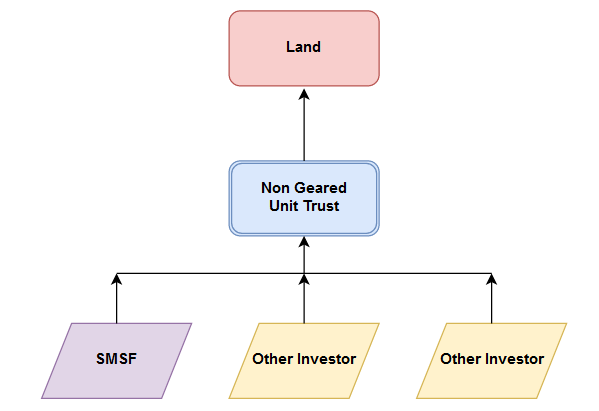It is sometimes wrongly assumed that a minute of the current trustee is sufficient to change the trustee of:
- a family discretionary trust (FDT); or
- a self managed superannuation fund (SMSF) (which must be a trust with a trustee too – see sub-section 19(2) of the Superannuation Industry (Superannuation) Act (C’th) 1993 (SIS Act));
and that a change of trustee will have no serious tax consequences. The second proposition is more likely to be true, but not always.
FDTs and SMSFs invariably commence with a deed which contains the terms (the trust terms or governing rules – TTOGRs) on which the trust commences. That, in itself, is a reason why I contended in 2009 in Redoing the deed that an instrument or resolution less than a deed to change the trustee is prone to be ineffective even where change by less than or other than a deed is stated to be permitted by the TTOGRs in the trust deed.
Changing trustee relying on ability to change in the trust deed
It is thus to the trust deed that one needs to look to find:
- whether there is a power in the TTOGRs to appoint a new trustee or to otherwise change the trustee; and
- if, so, what the procedure or formalities are for doing so.
Changing trustee relying on the Trustee Acts
If ability to change trustee is not present, or is derelict, in the TTOGRs then the Trustee Acts in states (and territories) provide options for appointing a new or additional trustee which vary state to state.
Trustee Act – New South Wales
In New South Wales: section 6 of the Trustee Act (NSW) 1925 allows a person nominated for the purpose of appointing trustees in the TTOGRs, a surviving trustee or a continuing trustee to appoint a new trustee in certain specified situations such as where a trustee:
- has died;
- is incapable of acting as trustee; or
- is absent for a specified period out of the state.
However an appointment of a new trustee in these situations must be effected by registered deed: sub-section 6(1) That is the deed of appointment must be registered with the general registry kept by the NSW Registrar-General, which is publicly searchable, and the applicable fee to so register the deed must be paid to NSW Land Registry Services for the appointment to take effect.
It is apparent from sub-section 6(13) that registration of a deed of appointment is not required where ability to appoint a new trustee is in the TTOGRs where the TTOGRs express a contrary intention; that is: where the TTOGRs expressly and effectively allow an appointment to be effected without a registered deed.
Trustee Act – Victoria
In Victoria there is a comparable capability for a person nominated for the purpose of appointing trustees in the TTOGRs, a surviving trustee or a continuing trustee to appoint a new trustee in writing in certain specified situations such as where a trustee:
- has died;
- is incapable of acting as trustee; or
- is absent for a specified period out of the state;
under section 41 of the Trustee Act (Vic.) 1958. However this Victorian law does not impose any requirement that the required instrument of appointment in writing must be registered.
Changing trustee by obtaining a court order
The supreme courts of the states and territories are also given a residual statutory capability to appoint trustees under the respective Trustee Acts. However applying to a supreme court for an order to change a trustee of a FDT or a SMSF with sufficient supporting grounds is an option of last resort given likely significant costs and uncertainties of obtaining the order.
Changing trustee by deed
The TTOGRs in a trust deed of a FDT or a SMSF will frequently require that an appointment of a new trustee may or must be effected by a deed. It is desirable that it should do so to ensure the appointment of a new trustee does not become of a matter of uncertainty and difficulty for the reasons I have described in Redoing the deed.
Tax consequences of a change of trustee
As a change of trustee without more generally does not change beneficial entitlements under a trust, the tax consequences are usually benign:
For capital gains tax (CGT), assurance that changing trustee does not give rise to a CGT event for all of the CGT assets held in a trust is diffuse under the Income Tax Assessment Act (C’th) (ITAA) 1997:
Sub-section 104-10(2) concerning CGT event A1 states:
(2) You dispose of a * CGT asset if a change of ownership occurs from you to another entity, whether because of some act or event or by operation of law. However, a change of ownership does not occur if you stop being the legal owner of the asset but continue to be its beneficial owner.
Note: A change in the trustee of a trust does not constitute a change in the entity that is the trustee of the trust (see subsection 960-100(2)). This means that CGT event A1 will not happen merely because of a change in the trustee.
Sub-section 960-100(2) with the Notes below it in fact say:
(2) The trustee of a trust, of a superannuation fund or of an approved deposit fund is taken to be an entity consisting of the person who is the trustee, or the persons who are the trustees, at any given time.
Note 1: This is because a right or obligation cannot be conferred or imposed on an entity that is not a legal person.
Note 2: The entity that is the trustee of a trust or fund does not change merely because of a change in the person who is the trustee of the trust or fund, or persons who are the trustees of the trust or fund.
Similarly sections 104-55 and 104-60 of the ITAA 1997 which concern:
• Creating a trust over a CGT asset: CGT event E1
• Transferring a CGT asset to a trust: CGT event E2
each restate the above Note: viz.
Note: A change in the trustee of a trust does not constitute a change in the entity that is the trustee of the trust (see subsection 960-100(2)). This means that CGT event E… will not happen merely because of a change in the trustee.
Stamp duty
A change of trustee can have stamp duty consequences where the trust holds dutiable property such as real estate.
Duty – NSW
Concessional stamp duty on the transfer of the dutiable property of the trust to the new trustee can be denied in NSW to a FDT unless the trust deed of the trust limits who can be a beneficiary, for anti-avoidance reasons: see sub-section 54(3) of the Duties Act (NSW) 1997.
Indeed Revenue NSW withholds the requisite satisfaction in sub-section 54(3) unless the TTOGRs provide or have been varied in such a way so that an appointed new trustee or a continuing trustee irrevocably cannot participate as a beneficiary of the trust. Contentiously satisfaction is withheld by Revenue NSW unless a variation to a FDT to so limit the beneficiaries is “irrevocable“ : see paragraph 6 of Revenue Ruling DUT 037, even though that variation may not be plausible or permissible under the TTOGRs of the FDT.
This hard line is taken by Revenue NSW to defeat schemes where someone, who might otherwise be a purchaser of dutiable property who would pay full duty on purchase of the property from the trust, becomes both a trustee and beneficiary able to control and beneficially own the property who is thus able to contrive liability only for concessional duty and avoid full duty,
Duty – Victoria
Although the Duties Act (Vic.) 2000 contains anti-avoidance provisions addressed at this kind of anti-avoidance arrangement, there is no comparable hard line to that in NSW in sub-section 33(3) of the Duties Act (Vic.) 2000 so that the transfer of dutiable property, including real estate, on changing trustee is more readily exempt from stamp duty.
Other requirements
A prominent requirement on changing trustee of a SMSF is notification to the Australian Taxation Office, as the regulator of SMSFs, within twenty-eight days of the change: see Changes to your SMSF at the ATO website.
Where changing trustee involves a corporate trustee then there may also be an obligation to inform the Australian Securities and Investments Commission of changes to details of directors of the corporate trustee, if any. There may be further matters to be addressed if any new or continuing directors are or will become non-residents of Australia and, with SMSFs, the general requirement in section 17A of the SIS Act that the parity between members of the fund on the one hand and trustees, or directors of the corporate trustee on the other, needs to borne in mind and, if need be, addressed.






